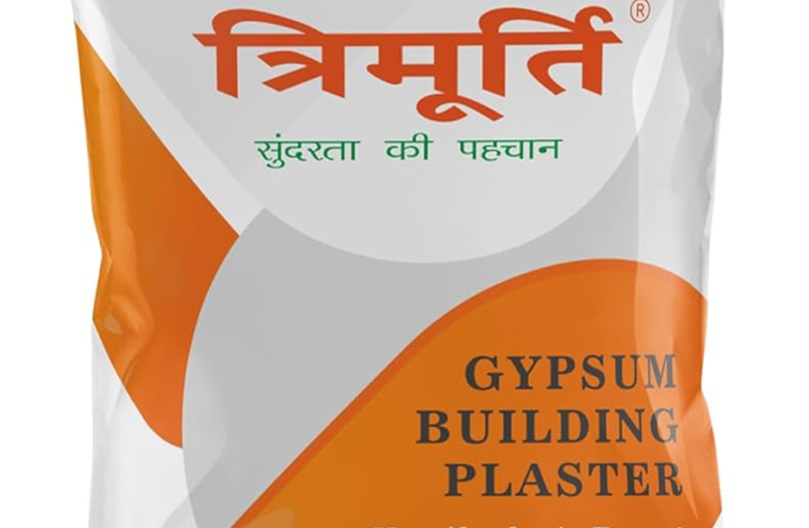
The selection of wall finishing material is essential for creating smooth, faultless walls in our homes and workplaces. For decades, conventional wall putty has been a popular option, but gypsum plaster has become a better substitute that is transforming the building sector. Let’s examine why more architects, contractors, and homeowners are choosing gypsum plaster
and how it stacks up against traditional wall putty.
Recognizing Wall Putty and Gypsum Plaster
Gypsum plaster is a building material that has been known since antiquity and is made from natural gypsum powder. Modern gypsum plaster formulas are still based on some of the fundamental advantages of the material, but major evolution has occurred in retaining the wonderful qualities the material possesses while incorporating the latest discoveries in science. The preferred option for wall finishing in many areas, however, is wall putty, a cement-based product.
Excellent Finish and Beauty
Its outstanding finish is one of the strongest arguments for using gypsum plaster instead of wall putty. When applied by qualified experts, gypsum plaster produces an exceptionally smooth surface devoid of flaws and undulations. Because gypsum powder is naturally white, it will appear bright and clean, improving the overall aesthetics of your area. With fewer applications, gypsum plaster can produce better results than wall putty, which frequently needs many coats and thorough sanding to obtain a smooth finish.
Labor and Time Efficiency
Time is of importance in today’s hectic building climate. Comparing gypsum plaster to conventional wall putty, there are notable benefits in terms of labor requirements and application time. While gypsum plaster sets quickly and can be painted over within 24 to 48 hours after application, wall putty usually requires several days between layers and considerable drying time. Labor expenses and project timelines can be greatly shortened by this quicker turnaround time.
Impact on the Environment and Sustainability
In the construction business, the ecological footprint of building materials is becoming more and more significant as environmental consciousness rises. Among wall putty alternatives, gypsum plaster is the most environmentally friendly choice. Produced from natural gypsum powder, it uses less energy and produces less waste when applied. A sustainable option for environmentally aware homeowners and builders, gypsum plaster is also recyclable and may be used in a variety of ways.
Sturdiness and Lifespan
Even if the initial wall putty price may seem appealing, long-term durability should be taken into account. Gypsum plaster is more resistant to shrinkage and cracking than conventional wall putty. Its inherent composition ensures longer-lasting results by allowing it to stretch and contract with temperature fluctuations without cracking. With the right care, the material’s natural qualities also make it impervious to fungus growth and water damage.
Advantages of Acoustics and Heat
Gypsum plaster has functional advantages over wall putty that go far beyond its visual appeal. Because of its inherent qualities, gypsum powder is a great thermal insulator that can assist reduce energy expenses and maintain pleasant indoor temperatures. Gypsum plaster is also a better sound-isolating material than wall putty, which makes it a great option for home, hotel, and workplace settings where noise abatement is crucial.
Safety and Health Aspects to Consider
Considerations of health should be taken into account when comparing wall putty with gypsum plaster. Gypsum plaster is safe because it is nontoxic and makes less dust than other plaster. The material is naturally made, and because it doesn’t release any particularly hazardous chemicals or volatile organic compounds (VOCs), the air indoors is much cleaner. This is of importance in buildings and residential areas where air quality is a very big issue.
Applicability Flexibility
Gypsum plaster’s adaptability makes it appropriate for a range of uses beyond simple wall finishing. The ability to mold and shape gypsum plaster allows for the creation of various architectural aspects, from repairing damaged surfaces to adding decorative components. Wall putty is only good for surface finishing; gypsum plaster is more versatile and can be used for a wider range of current construction demands.
Upkeep and Patches
The superiority of gypsum plaster over wall putty is also evident in long-term maintenance. Gypsum plaster is easily repaired in the event of damage without leaving any noticeable blemishes or stains. Because of the consistent composition of the material, repairs will blend in perfectly with the original surface. In places where there is a lot of traffic or when wall damage occurs occasionally, this is especially helpful.
In the long term, cost-effectiveness
While wall putty may start off cheaper initially, you’ve got to think about the big financial picture. In the long term, gypsum plaster is actually cheaper in that it will last longer, stay in better condition longer, and once on the wall, is superfast to apply. Gypsum plaster has often been demonstrated to be more economical, if labor, materials waste, and future maintenance costs are considered.
Selecting the Right Option
Several considerations, such as the project’s needs, schedule, budget, and intended results, should guide the choice between gypsum plaster and wall putty. Now, in contemporary buildings, however, gypsum plaster is increasingly becoming a much more common choice due to all of its benefits. Gypsum plaster comes alongside with infinite advantages due to its quality, durability, cost-effectiveness, and environmentally friendly attributes that’s why one should choose this plaster over conventional wall putty.
Conclusion
However, as building materials and technologies become more sophisticated, a path toward better quality, more sustainable, and more efficient solutions will be inevitable. Compared with conventional wall putty, gypsum plaster is a definite improvement, as it meets current building codes and counters environmental items, among many other advantages. While the cost of gypsum plaster may prove higher compared to wall putty initially, however, the longer durability and better maintenance and aesthetics make it a worthwhile investment for all building projects.
A thorough evaluation of these elements can assist those organizing new building or remodeling projects in making an informed choice. Gypsum plaster’s improved qualities and the benefits it provides to builders and end users are the reasons for its rising appeal in the building sector. As more people become aware of its advantages, gypsum plaster is probably going to be the go-to option for wall finishing in contemporary building projects.






